MRI Systems Engineering
MRI Systems Engineering
Weekend Course
Weekend Course
ORGANIZERS: Greig Scott, Ileana Hancu
Saturday, 11 May 2019
| Room 516AB | 08:00 - 17:00 | Moderators: Clarissa Cooley, William Handler |
Skill Level: Basic to Intermediate
Session Number: WE-02AB
Overview
This one-day educational course is targeted at scientists and clinicians interested in understanding the engineering of magnetic resonance systems on a subsystems level. In a series of lectures from experts in MR systems engineering, attendees will first be provided with an overview of an MR system and then learn about the design of magnet, gradients, and shim systems, as well as the operation of the radiofrequency (RF) electronic subsystems that interface with RF coils. Issues relating to the site preparation and installation of new MR systems will also be discussed. In addition, attendees will be taught about the key elements of MR safety as it relates to peripheral nerve stimulation (low frequency electromagnetic field interactions with the body) as well as energy deposition in the body from high frequency electromagnetic field interactions. The compatibility of medical devices and implants with an MRI scanner will be discussed. This course is aimed at scientists and clinicians with a technical background and interest in MR systems hardware. It is expected to provide attendees with an understanding of fundamental aspects of MR system operation.
Target Audience
Scientists and clinicians who are starting to work in the field of MRI and would like to have an overview of the engineering of an MR system. More experienced researchers in particular areas of MR engineering will also benefit from hearing about recent advances in the engineering of MR systems.
Educational Objectives
As a result of attending this course, participants should be able to:
- Discuss the basic subsystems hardware components of an MRI scanner, including how they interact and function;
- Describe issues related to installing a new MR scanner, including space, venting, power, and cooling considerations;
- Recognize practical limitations in the design and construction of magnets, gradients, and shim systems;
- Identify the basic mechanisms by which medical devices interact with the magnet and gradients within an MRI scanner;
- Describe the interactions of electromagnetic fields (both low frequency gradient switching and high frequency RF) with the human body; and
- Explain the RF electronic subsystems that interface with RF coils, including interactions between separate transmit and receive coils.
Overview
This one-day educational course is targeted at scientists and clinicians interested in understanding the engineering of magnetic resonance systems on a subsystems level. In a series of lectures from experts in MR systems engineering, attendees will first be provided with an overview of an MR system and then learn about the design of magnet, gradients, and shim systems, as well as the operation of the radiofrequency (RF) electronic subsystems that interface with RF coils. Issues relating to the site preparation and installation of new MR systems will also be discussed. In addition, attendees will be taught about the key elements of MR safety as it relates to peripheral nerve stimulation (low frequency electromagnetic field interactions with the body) as well as energy deposition in the body from high frequency electromagnetic field interactions. The compatibility of medical devices and implants with an MRI scanner will be discussed. This course is aimed at scientists and clinicians with a technical background and interest in MR systems hardware. It is expected to provide attendees with an understanding of fundamental aspects of MR system operation.
Target Audience
Scientists and clinicians who are starting to work in the field of MRI and would like to have an overview of the engineering of an MR system. More experienced researchers in particular areas of MR engineering will also benefit from hearing about recent advances in the engineering of MR systems.
Educational Objectives
As a result of attending this course, participants should be able to:
- Discuss the basic subsystems hardware components of an MRI scanner, including how they interact and function;
- Describe issues related to installing a new MR scanner, including space, venting, power, and cooling considerations;
- Recognize practical limitations in the design and construction of magnets, gradients, and shim systems;
- Identify the basic mechanisms by which medical devices interact with the magnet and gradients within an MRI scanner;
- Describe the interactions of electromagnetic fields (both low frequency gradient switching and high frequency RF) with the human body; and
- Explain the RF electronic subsystems that interface with RF coils, including interactions between separate transmit and receive coils.
| 08:00 |
MR Systems Overview
Seung-Kyun Lee
This educational talk is designed to provide a broad overview of the functions and interactions of the subsystems of a modern clinical MRI scanner and explain various design constraints originating from engineering and physiological limitations.
|
|
| 08:30 |
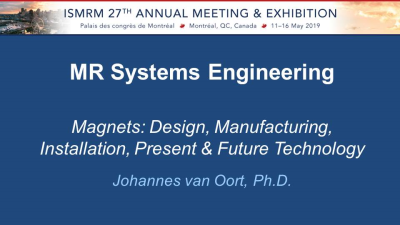 |
Magnets: Design, Manufacturing, Installation, Present & Future Technology
Johannes Van Oort
An introduction to the design, manufacturing and installation of MR magnets is presented. Emphasis is placed upon current and future technology of superconducting magnets. Basic coil design is explained, with a brief introduction to the application of superconductivity in MR magnets. Current manufacturing techniques are illustrated with a brief photographic tour. Finally, future industry trends are discussed.
|
| 09:00 |
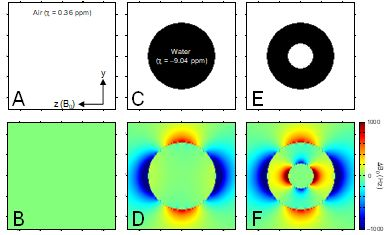 |
Magnetic Field Shimming
Robin de Graaf
Magnetic field inhomogeneity affects the performance of almost all MRI and MRS methods, leading to signal loss and image distortion in MRI and loss of spectral resolution in MRS. Spherical harmonics (SH) shimming is the standard tool to improve magnetic field homogeneity, but falls short on complex samples like the human head. The principles and practical aspects of SH shimming are discussed, together with more recent non-SH-based alternatives.
|
| 09:30 |
Break & Meet the Teachers | |
| 10:00 |
Gradient Coil Design Considerations, Manufacturing & Limitations
Blaine Chronik
|
|
| 10:30 |
Eddy Current Measurement & Compensation
Christoph Barmet
|
|
| 11:00 |
Peripheral Nerve Stimulation
Rebecca Feldman
Rapidly changing magnetic fields, such as those produced by a switched magnetic field gradient coil can activate nerve fibers in ways that can be perceived as sensation or even induce involuntary muscle contraction or twitching. Gradient induced peripheral nerve stimulation (PNS) will be discussed as well as the limits it imposes on the operation of gradient system.
|
|
| 11:30 |
Lunch & Meet the Teachers | |
| 13:30 |
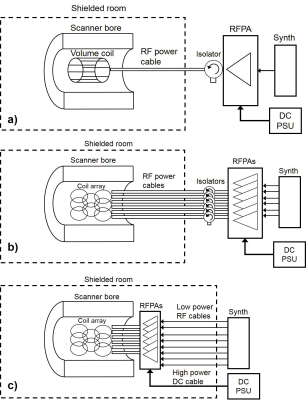 |
MRI Transmitter Amplifier Systems
Michael Twieg
The RF power amplifier (RFPA) is one of several “black box” components in the MRI scanner. The implementation of the RF transmit chain has remained fairly consistent since the earliest clinical MRI scanners, but the advent of parallel transmission (pTX) provides a compelling opportunity to rethink not only the design of the RFPAs and coils, but of the entire MRI scanner. In this lecture we will review fundamental RFPA concepts such as linearity and efficiency. We will then explore advanced topics relating to pTX, including control, decoupling, local amplifiers, and switchmode amplifiers.
|
| 14:00 |
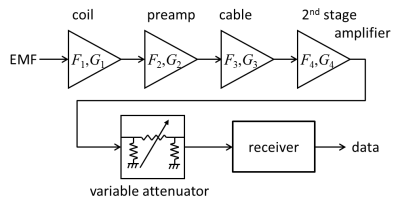 |
MR Receive Chain
Nicola De Zanche
This lecture covers the components of the RF chain from detection of the signal in the RF coil to its final representation as digital data. Each component is described and its effect on signal strength and quality is discussed.
|
| 14:30 |
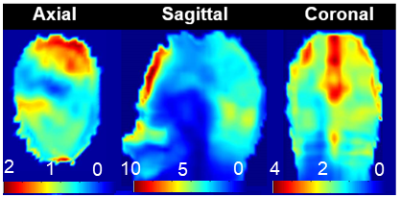 |
RF Field Simulations & Safety Aspects
Simone Winkler
A major challenge that currently hinders the application of Ultra High-Field (UHF) MRI in clinical diagnostics is the non-uniform deposition of radiofrequency (RF) power in the body. Electromagnetic modeling has become a popular tool to assess SAR in simulation [10]-[14]. A diverse family of detailed body models can be used to estimate global SAR and peak local SAR. While SAR values can still vary from patient to patient, with patient position, and with other variables, these simulations provide a strong basis for novel approaches that tackle SAR prediction more accurately [15]-[17]. Given the strong incentive to develop UHF MRI into a clinical tool, it is paramount to find a viable and accurate method for monitoring the spatially varying SAR pattern, and therefore the actual ratio of peak local SAR to global SAR, as the key parameter in MRI safety.
|
| 15:00 |
Break & Meet the Teachers | |
| 15:30 |
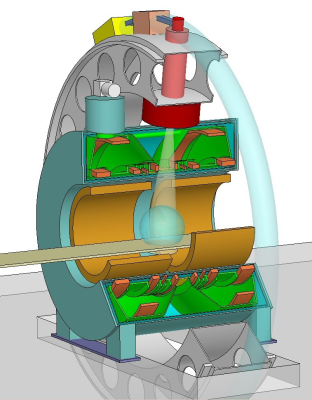 |
MR Linac: Implementations & Challenges
Johan Overweg
Key hardware features and requirements of integrated MR-guided Linac-based radiotherapy systems and practical implementations are explained.
|
| 16:00 |
PET/MR: System Design Considerations Video Permission Withheld
Floris Jansen
This talk is aimed at physicists, engineers, and others who would like a better appreciation of the challenges involved in integrating a PET detector inside a 3T MR scanner. The main challenges involved in integrating a PET detector inside an MR scanner will be explained, and various approaches will be discussed for solving them.
|
|
| 16:30 |
MR Guided Focused Ultrasound in the Brain: Systems & Applications
William Grissom
Focused ultrasound in the brain has recently been made possible by the advent of MRI monitoring and phased array transducers. The method is currently FDA-approved for ablation of the VIM for essential tremor, and BBB opening and neuromodulation are also being explored. In this talk I will review each of these applications and discuss how they drive the design of MR-guided FUS systems.
|
|
| 17:00 |
Adjournment & Meet the Teachers |
 Back to Program-at-a-Glance |
Back to Program-at-a-Glance |  Back to Top
Back to Top